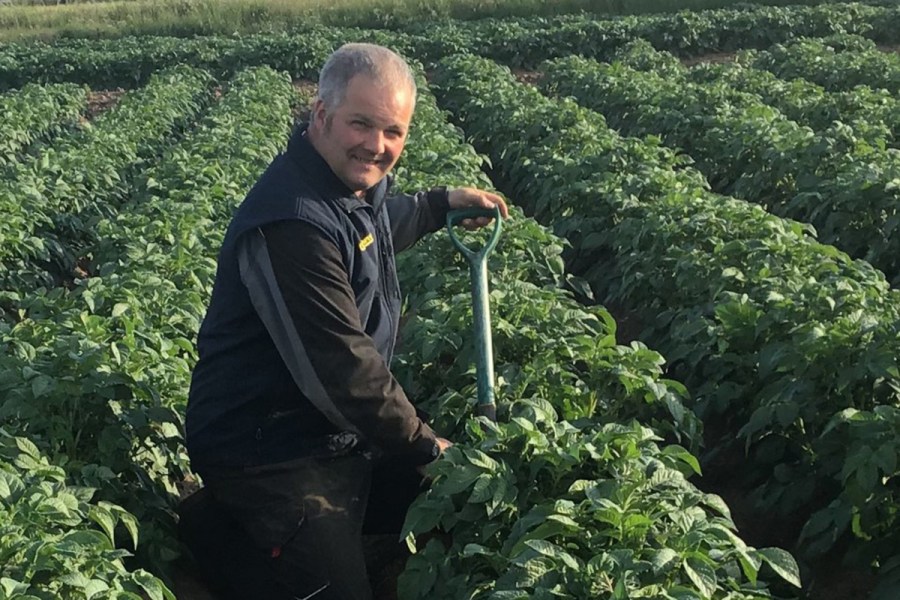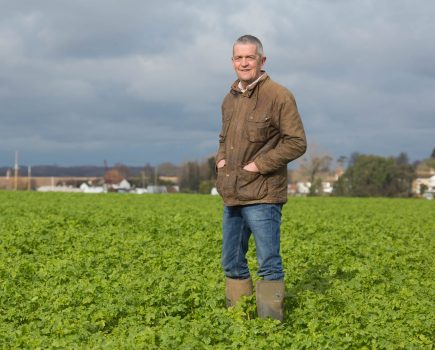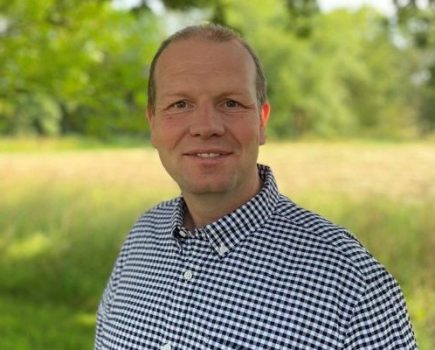By Andrew Wilson
I know I’m not the most enthusiastic irrigator operator, but talk about a chalk and cheese season! In Yorkshire, we’ve got away fairly lightly as far as torrential downpours go, but fields are beginning to resemble 2012 far too quickly for my liking.
We managed to cut 38ha of winter barley in 17 days of stop-start frustration, and are currently poised ready to start wheat once the rain stops. Yields have been a little uninspiring but not disastrous, at 7.4t/ha adjusted to 14.5% moisture content. The soggy straw is another challenge with half yet to bale, but we’re not on our own there.
In the potato fields, our damdyking activities which I outlined last month have been tested out and have found their limit. Suffice to say, ponded areas are minimal – it’s done its job – as ever though, there’s always room for a tweak.
Constant incessant rain does test potato resilience though – tubers are sat in clart and resemble scotch eggs at the moment. We’ve upped our game on the blight defence and have kept it out so far, but have some blackleg evident in a field where de-sprouted cut seed was planted, and raised lenticels are very easy to find.
Yields look promising, but the end result is largely dependent on sunshine now. The ever-essential (even at this years inflated price..) maleic hydrazide will be applied to all store-destined crops as soon as weather conditions allow.
July once again provided more CPD in the form of visiting some interesting in-field trials, both by McCain in South Yorkshire and NIAB’s SPoT North event which was sponsored by CUPGRA and hosted by Alex Godfrey in North Lincolnshire.
I always find these events thought-provoking, useful and a great networking opportunity. I harvested my first potato into a red basket aged eight way back in 1984, but still feel like nearly 40 years of experience has barely scratched the surface of what’s possible to learn.
For 12 years now, we’ve been trying to find more natural ways to produce our potato crops and have made significant inroads to reducing nematicide and diesel use particularly. A few successes always fuel the desire to go that bit further, and it was this that took me to Groundswell again in June, to see some potato-focussed presentations on the subject.
It’s great to have some engagement and both financial and physical encouragement in the principles of more soil-friendly potatoes from our customers, and some open debate on the subject. Here on the farm we’re on a journey to reducing cultivations and improving water efficiency via cover crops, but the interesting part to me was cycling already present nutrients via whatever means possible.
We started placing DAP back in 1997 and have reduced the amount required by simply wasting less, but mobilising locked up nutrition has huge potential. It’s also refreshing to experience a none dictating approach.
One thing not really touched on was the Environment Impact Quotient (EiQ) rating for pesticides – essentially ranking how environmentally ‘bad’ each product is. This allows a grower to make informed decisions on which product is the most appropriate to a given situation, and to identify alternatives.
Personally, I’m not a fan of large doses of MOP, mostly because I feel that the chloride present has too much of a negative effect on potatoes. Our K source of preference (alongside fym) is PotashpluS – this gives us a cheaper source of sulphur (and more N options), sufficient K, a little Mg, a sniff of boron and lots of that underrated nutrient, calcium. And, it comes from just over the hill at Boulby.
As a result of all of these tweaks, our chuck-outs from the grader have reduced from 4.4% of total crop five years ago, to 0.46% in 2022. Switched into £/ha, that alone is a significant return on investment.
It’s very easy to over-complicate matters. All of the speakers highlighted the need to keep things simple and tweak the easy stuff first, which I do feel is important – everyone’s situation is different.
You can watch a recording of the regen potatoes talk from Groundswell on the event’s official YouTube channel, it’s entitled ‘linking soil health and potato production.’
I’ll close by making a plea to growers to cast a practical eye over safety on farm. Check the trailer brakes, lights and drawbar eyes, fix that PTO guard, make a bracket for a spade for that convenient place on the harvester, or even weld some box section across the front of an old telehandler bucket to make those little lift-me-up jobs that ‘don’t take a minute’ safer. Because every year, somewhere, a shortcut results in a tragedy.
Make the safe way the easy way.
Happy harvesting everybody. We’ve seen wet seasons before – if it’s too wet it’ll dry, and if it’s too dry it’ll rain, it always has.
This article was taken from the latest issue of CPM. For more articles like this, subscribe here.
Sign up for Crop Production Magazine’s FREE e-newsletter here.




